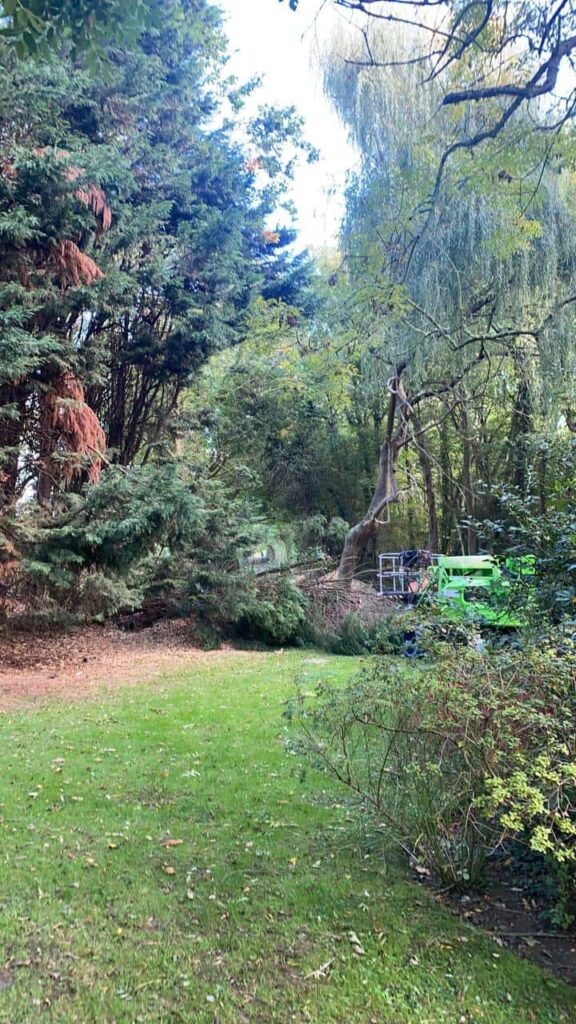Introduction: Maintaining a well-manicured hedge can significantly enhance the beauty and functionality of your garden. At Mundford Tree Surgeons, we understand that different hedge heights require distinct approaches to cutting and care. Whether you have low, medium, or high hedges, each height presents challenges and opportunities. In this blog post, we’ll explore key considerations for hedge cutting based on hedge height, providing you with valuable insights to keep your hedges in top condition.
1. Low Hedges (Up to 1.5 Metres)
Low hedges are often used to define garden boundaries, create neat edges, or add visual interest to flower beds.
- Frequency of Cutting: Low hedges require more frequent trimming to maintain their shape and health. Regular cutting, at least twice a year, helps prevent them from becoming overgrown and ensures they remain attractive.
- Techniques: Use hand shears or a small hedge trimmer for precise cutting. Be mindful not to cut too low, which can damage the lower part of the hedge. Aim to maintain a slightly wider base to allow for natural growth and reduce the risk of the hedge becoming leggy.
- Seasonal Considerations: The best time to cut low hedges is late spring or early summer when new growth is vigorous. Avoid cutting during late autumn or winter to prevent potential damage from frost.
2. Medium Hedges (1.5 to 3 Metres)
Medium hedges often serve as privacy screens or decorative elements in gardens and require a balanced approach to cutting.
- Tools and Equipment: Use a hedge trimmer with adjustable heights or extendable handles for medium-height hedges. This allows you to reach the top of the hedge without ladders, making the task safer and more efficient.
- Cutting Techniques: Trim the sides of the hedge first, then work on the top. Maintain a slight taper from bottom to top to ensure the hedge receives adequate light and air circulation. Regular trimming helps prevent the hedge from becoming too dense, which can lead to pest issues and poor growth.
- Seasonal Care: Medium hedges benefit from a light trim in early spring and a more substantial cut in late summer. Avoid heavy cutting during autumn to prevent exposing the hedge to potential frost damage.
3. High Hedges (Over 3 Metres)
High hedges are often used for screening, windbreaks, or as dramatic landscape features, but they require special considerations for maintenance.
- Safety First: Cutting high hedges involves working at height, which can be dangerous. Use appropriate safety gear, such as a harness and protective eyewear, and consider using scaffolding or a cherry picker for stability and safety. Hiring professional tree surgeons is advisable if you’re unsure or lack the necessary equipment.
- Tools and Techniques: For efficiency, use a long-reach hedge trimmer or a petrol-powered hedge cutter. Start by trimming the top and then move to the sides. Maintain a gradual tapering from bottom to top to ensure even growth and avoid heavy cutting that can stress the hedge.
- Seasonal Considerations: High hedges should be cut back in late summer or early autumn. Avoid cutting during winter or early spring to prevent damage from cold weather and to give the hedge time to recover before new growth begins.
4. General Hedge Cutting Tips
Regardless of hedge height, some best practices apply to all hedge-cutting tasks:
- Check for Wildlife: Check for nesting birds or other wildlife using the hedge before cutting. In the UK, many bird species nest in hedges, and cutting during the nesting season (March to August) can disturb their habitats.
- Maintain Sharp Tools: Keep your cutting tools sharp to ensure clean cuts and reduce damage to the hedge. Dull tools can tear the foliage, leading to an uneven appearance and increased disease risk.
- Dispose of Clippings: Properly dispose of hedge clippings by composting or using a green waste collection service. This helps keep your garden tidy and reduces the environmental impact of waste.
Conclusion: Understanding the specific needs of your hedges based on their height is crucial for effective maintenance. Whether you have low, medium, or high hedges, following the right techniques and considering seasonal factors will ensure that your hedges remain in excellent condition.
Call us on: 01842 771 096
Click here to find out more about Mundford Tree Surgeons
Click here to complete our contact form and see how we can help you with your tree’s needs.

